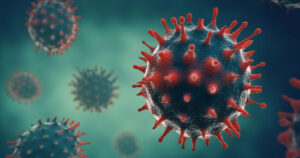WHAT IS RDA?
RDA stands for recommended dietary allowance. The Food and Nutrition Board of the U.S. National Academy of Sciences’ Institute of Medicine created this general guideline that applies to vitamins and minerals from food. It states how much of a specific nutrient your body needs on a daily basis to avoid illness. For example, if people don’t get enough vitamin D, they may get rickets. If they don’t get enough vitamin B1, then they may get beriberi.
WHAT IS % DV?
The percent daily value (DV) is a guide to the nutrients present in your food. For example, if a portion of food lists 10% DV for calcium, it means that that portion of food gives you 10% of the calcium you need for the day.
DO WE NEED TO REACH 100% OF DV?
No. You do not need to reach 100% of the DV to be healthy.
The DV is a very general guideline to give us an idea of what we need in a day. It does not take into consideration different individual needs, such as one’s activity levels, whether active or sedentary, physical size, diet, health, or environment. For example, if we get a lot of sun exposure, our bodies will synthesize our own vitamin D, thus, we do not need 100% DV of vitamin D. However, if we do not get any sunlight at all, we might need more vitamin D. Moreover, the DV is based on a calorie intake of 2,000 calories a day for a healthy adult, but depending on our circumstances, we may need more or less calories. In addition, our bodies have stores of some vitamins such as A, D, E and K, so for most of us, we do not need to take in 100% of the DV for all vitamins and minerals.
ARE THE VITAMIN OR MINERAL LABELS ALWAYS ACCURATE?
The vitamin and mineral values are not always accurate.
Each wholesome food has a different composition, and every batch of food may be different. Natural wholesome foods differ in nature. That’s why natural and wholesome fruits and vegetables themselves—the best foods—simply do not have nutrition labels.
ARE NUTRITION LABELS ARTIFICIALLY INFLATED?
For many foods, the nutritional content changes, or leeches out, with time and exposure. For example, vitamin C is easily lost when exposed to air. Many manufacturers will add artificial synthesized vitamins into their products to boost the DV so that their products seem better. For example, ascorbic acid is often added to artificially boost vitamin C content, and costs as little as $3.50 a kilogram—enough to give 45 people sufficient vitamin C for a year.
HOW ARE NUTRIENTS PRESERVED?
The manufacturing process plays a large role in preserving nutrients. Wholesome foods should be either frozen or dried to preserve the natural nutrients. If the product is in liquid form, good manufacturers will fill the remaining space in the product with nitrogen, not oxygen, to prevent nutrient leaching.
ARE VITAMINS AND MINERALS ENOUGH TO MAINTAIN LIFE?
No. Relying solely on vitamins and minerals cannot help us maintain normal body functions. If we take in only vitamins and minerals, we may survive for a while but not for long. Hence experts recommend eating a wide variety of fruits and vegetables. In addition to vitamins and minerals, wholesome plants are packed with other nutrients, such as phytochemicals, antioxidants, and polysaccharides, most of which scientists haven’t even discovered yet.
WHY ISN’T EVERY NUTRIENT LISTED ON THE LABEL?
Wholesome plants contain a variety of phytochemicals, polysaccharides, and other nutrients, most of which scientists haven’t even discovered yet.
CAN TAKING VITAMINS AND MINERALS BE HARMFUL?
Yes, taking too many manmade vitamins can harm your health, and there is a possibility of overdose. Evidence shows that too much of a vitamin can cause a variety of health issues, including cancer.
Taking isolated, concentrated minerals creates physiological imbalances in the body. Multiple studies have demonstrated that taking such vitamins (beta-carotene, folic acid, and vitamin E) increases the risk of cancer, heart disease, and death.
The American Association for Cancer Research looked at research of over 300,000 people in one of their annual meetings in 2015. They found that: selenium could increase the chances of getting non-melanoma skin cancer; vitamin E could increase the chances of prostate cancer; beta-carotene could increase the chances of lung cancer; and folic acid could increase the chances of colon cancer.
Some minerals are heavy metals. Our bodies need them, but too much is toxic and will cause health issues. For example:
| Iron | Bleeding in the gastrointestinal tract Liver damage Cardiac depression Metabolic acidosis |
| Zinc | Flu-like symptoms Fever Stomach and intestinal disturbances Liver dysfunction |
| Selenium | Respiratory system issues Irritation of the gastrointestinal tract Inflammation of the liver Hair loss Peripheral nerve damage |
| Chromium | Bleeding in the gastrointestinal tract Acute renal failure Lung cancer |
| Manganese | Parkinson-like syndrome Respiratory issues |
Too much vitamins may cause the following side effects:
| Vitamin C | Nausea Diarrhea Stomach cramps Kidney stones |
| Vitamin A | Hair loss Liver damage Bone Loss |
| Vitamin E | Blood clotting issues |
| Vitamin B | Nerve damage Liver damage |
Source: Dr EE Zhang, eLead Global, EExplanation, RDA




